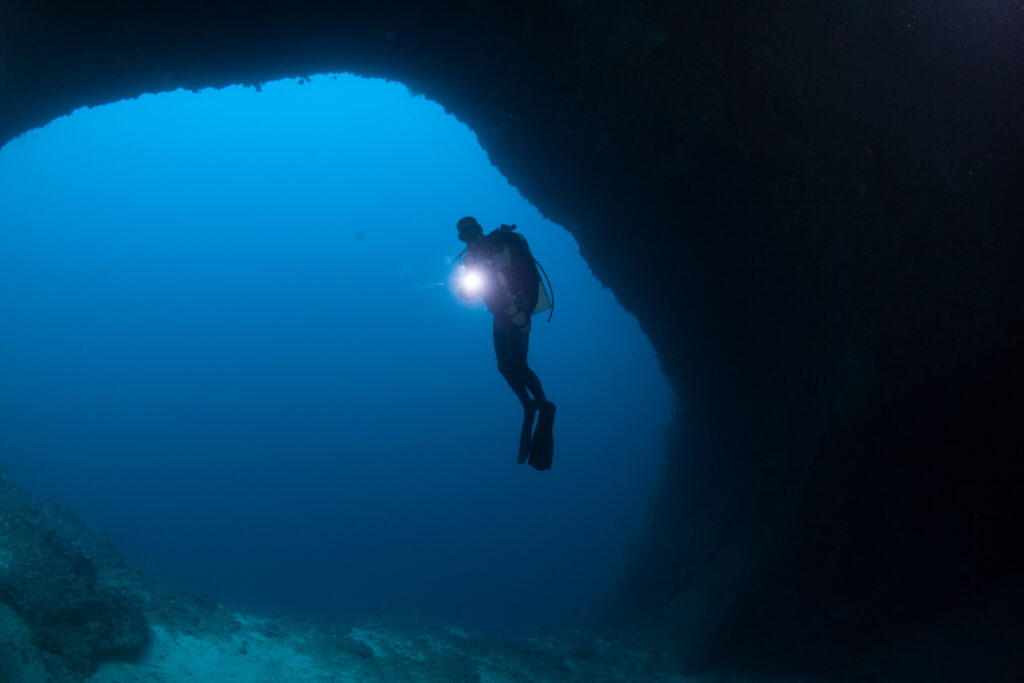What is Immersion Hypothermia?

Immersion hypothermia occurs when the body’s core temperature drops significantly due to prolonged exposure to cold water. This condition is particularly relevant to scuba divers, who often spend extended periods in environments where the water temperature can quickly lead to substantial heat loss. Understanding immersion hypothermia is crucial for divers, as it can lead to severe health consequences if not promptly recognized and treated.
What is Cyanosis?

Cyanosis refers to a bluish discoloration of the skin and mucous membranes caused by an insufficient level of oxygen in the blood. This condition can signal underlying health issues, particularly those related to respiratory and circulatory systems. In scuba diving, cyanosis is a critical indicator that a diver might be experiencing hypoxia, a dangerous reduction in oxygen levels. Recognizing and understanding cyanosis is vital for ensuring diver safety, as it can be a precursor to more severe conditions if not promptly addressed.
What is Professional Diving?

Professional diving encompasses a range of underwater activities performed by individuals trained and certified to work in various underwater environments. These divers are equipped with specialized skills and equipment to carry out tasks that support industries such as commercial oil and gas, scientific research, military operations, and public safety. The importance of professional diving lies in its contribution to the economy, scientific discoveries, and public safety operations, making it an indispensable occupation with a rich history and evolving technology.
What is a Kelp Surface Dive?

A kelp surface dive involves swimming and exploring near the surface of the ocean where dense forests of kelp thrive. This activity is popular among divers and marine enthusiasts for its unique opportunity to observe a vibrant and ecologically significant environment. Kelp forests are found in coastal areas worldwide and are known for their towering, underwater canopies. These dives offer an unparalleled chance to witness marine life that thrives within these underwater forests while requiring less equipment and technical expertise than deeper dives. Kelp surface diving is both a recreational pursuit and a valuable method for scientists studying these critical ecosystems.
What is Pressure?

Pressure is a fundamental concept in physics, defined as the force exerted per unit area. In the context of scuba diving, understanding pressure and its effects is crucial for safety and efficiency. Pressure plays a pivotal role in determining how divers experience the underwater environment, affecting everything from breathing to buoyancy. As divers descend into the water, the pressure increases, impacting both their equipment and bodies in significant ways. This article will discuss the principles of pressure, its effects on the human body, the health risks associated with changes in pressure, techniques for managing these changes, and the equipment designed to withstand them.
What is Open Water Diving?

Open water diving is a fundamental form of recreational scuba diving, characterized by diving in natural bodies of water such as oceans, seas, and lakes. Unlike confined water diving, which takes place in controlled environments like swimming pools, open water diving offers divers the opportunity to experience the vastness and diversity of underwater ecosystems. This type of diving typically involves greater depths and more variable conditions, making it both a thrilling and challenging pursuit for enthusiasts of all levels. The concept of open water diving is integral to the sport, providing the foundation for various specialized diving activities and advanced certifications.
What is Samba in Scuba Diving?

Samba, in the context of scuba diving, refers to an involuntary muscle spasm or twitching that occurs as a warning sign of impending hypoxia or loss of consciousness underwater. This condition is crucial for divers to recognize because it serves as a precursor to more serious and potentially life-threatening situations such as blackouts. Understanding samba and its implications can significantly enhance diver safety and preparedness, ensuring that appropriate actions are taken promptly to mitigate risks. While samba is less commonly discussed than other diving conditions, its impact on diver health and safety is equally important.
What is Weight in Scuba Diving?

Weight is a fundamental concept in scuba diving, playing a crucial role in a diver’s ability to achieve neutral buoyancy and maintain control underwater. In the context of scuba diving, weight refers to the additional mass that divers carry to counteract the buoyancy of their bodies and equipment. Proper weighting is essential for divers to descend, ascend, and maintain depth with ease, ensuring a safe and enjoyable underwater experience. This article delves into the physics of weight in water, the types of weights used, how to calculate the required weight, and the importance of weight placement and safety considerations.
What is Public Safety Diving?

Public safety diving refers to a specialized area of underwater diving focused on search, rescue, and recovery operations in various aquatic environments. Unlike recreational or commercial diving, public safety diving is conducted by highly trained professionals, often part of law enforcement, fire departments, or other emergency response teams. These divers are called upon to perform tasks that are critical to public safety, such as locating drowning victims, recovering evidence from underwater crime scenes, and conducting underwater inspections during disasters.
What is Neoprene?

Neoprene, a type of synthetic rubber, has become integral to many industries due to its unique properties, especially in scuba diving gear. Originally developed by DuPont in the 1930s, neoprene’s chemical stability and flexibility made it an ideal material for a wide range of applications. In scuba diving, neoprene is predominantly used in the manufacture of wetsuits, providing thermal insulation, buoyancy, and protection against the underwater environment. Its adoption revolutionized diving by significantly enhancing diver comfort and safety. This article delves into the historical development, properties, manufacturing process, applications in scuba diving, maintenance and care, and environmental impact of neoprene.
